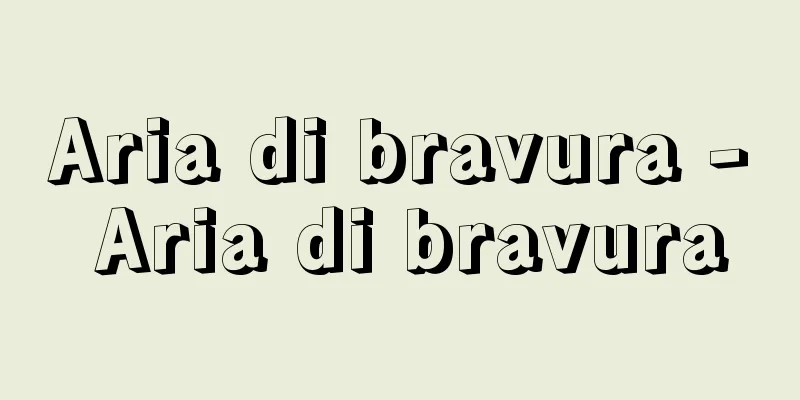Sudeten (English spelling)

|
Historical name for the area in northern Czech Republic bordering Germany and Poland. The name comes from the Sudeten (Sudety) Mountains that stretch across the northern Czech Republic. Sudeten is the German name, and Sudety in Czech. The area covered by the Sudetenland varies depending on the period, but broadly speaking, it refers to all the areas in northern Czech Republic where Germans live and where Germans and Czechs live together. However, after the Munich Conference in September 1938, it refers to the areas that were incorporated into the Third Reich, and from March 1939, when the whole of Czech Republic was annexed by the Third Reich, the crescent-shaped green belt stretching from Ostrava in northeastern Moravia to Domazhrice in western Bohemia was called the Sudeten Gau (District) or Gau Sudeten until 1945. The region is rich in mineral resources such as gold, silver, copper, iron, coal, and nickel. Germans living in the Czech Republic were originally called Bohemian Germans or German Bohemians, but after 1910 the term Sudeten Germans was used to enhance the sense of solidarity and ethnic consciousness in German-inhabited areas, and became common after World War I. Their origins date back to the time of German colonization of the East, which flourished in the 13th century. The successive kings of the Kingdom of Bohemia, which had the Czech Republic at its core, encouraged the settlement of German farmers, craftsmen, and merchants in order to establish a financial base, granted them privileges, and protected them through mining laws, urban laws, and other means. This led to political struggles between the Czechs, who were more numerous than the Germans, but the dominance of the Germans, who had economic power, grew stronger. Especially from the 17th century onwards, the Germanization policy of the Austrian Habsburgs made the dominance of Germans in the Kingdom of Bohemia decisive. In the first half of the 19th century, the Czech national revival movement, which led the Slavic peoples, developed from a linguistic and literary movement into a political struggle with the Germans, and in the second half of the 19th century serious ethnic conflicts were generated everywhere. This conflict, known as the Sudeten problem, had long-lasting repercussions. [Tsuyoshi Inano] The Sudeten problemIn 1918, the Czechoslovak Republic was established with the dissolution of the Austro-Hungarian (Habsburg) Empire (1867-1918), but 3.12 million people of German descent (about 23% of the country's population according to 1921 statistics) lived in the border area between Germany and Austria. The Sudeten Germans, dissatisfied with the independence of the new republic, sought autonomy within the republic, and when Hitler came to power in Germany in 1933, they deepened their ties with Nazi Germany, centering on the Sudeten German Party led by Henlein. In 1938, Hitler demanded that the Sudetenland be incorporated into Germany, and as a result of the Munich Conference in September of the same year, the Sudetenland was ceded to Germany. In March 1939, Germany made the remaining Czech regions a protectorate, and Slovakia became independent as a puppet state of Germany. After the liberation of Czechoslovakia in 1945, President Beneš, with the consent of the Allies, decided to expel the Sudeten Germans, and with the exception of a very small number who had participated in the anti-Nazi struggle, they were forcibly relocated to Germany. The expelled Germans continued to campaign for the restoration of their rights and compensation in the Federal Republic of Germany (West Germany), which resulted in continued tensions between West Germany and Czechoslovakia. When the communist regime in Czechoslovakia collapsed at the end of 1989, reconciliation negotiations over this issue began, and after the reunification of East and West Germany in 1990 and the separation of the Czech Republic and Slovakia in 1993, the Declaration of Reconciliation was officially signed between Germany and the Czech Republic in January 1997. In this declaration, Germany acknowledged its responsibility for and apologized for the Czech casualties caused by territorial annexations and occupations since the Munich Conference, while the Czech Republic apologized for the postwar expulsion of Sudeten Germans. The two countries also agreed to the establishment of a Future Fund to promote their common interests, and Germany promised to support the Czech Republic's accession to the European Union. Although this declaration can be said to have brought about a tentative conclusion to this issue, differences in interpretations on the issue of compensation for the Sudeten Germans remained, leaving problems unresolved. [Tadayuki Hayashi] "Modern History of Hungary and Czechoslovakia" by Toshitaka Yada (1978, Yamakawa Publishing) " "Hitler and the Munich Agreement" by Masanori Tsunakawa (Kyouikusha Rekishi Shinsho) " "Germany Beyond the Borders" by Kiyohiko Nagai (Kodansha Gendai Shinsho) " "Danube Europe History" edited by Shingo Minamizuka (1999, Yamakawa Publishing) [References] | | | | | |Source: Shogakukan Encyclopedia Nipponica About Encyclopedia Nipponica Information | Legend |
|
チェコ北部の、ドイツ、ポーランドと接する地域の歴史的呼称。名称は、チェコ北部一帯に広がるズデーテン(スデティ)山脈に由来する。ズデーテンはドイツ語名で、チェコ語名ではスデティSudety。ズデーテン地方をさす範囲は時期によって異なるが、大別すると、チェコ北部のドイツ人居住地域、ドイツ人とチェコ人の混在地域すべてをさす。ただし、1938年9月のミュンヘン会談以降はドイツの第三帝国に編入された地域をさし、39年3月チェコ全体がドイツ第三帝国に併合されてから45年まではモラビア北東部のオストラバからボヘミア西部のドマジュリシェにいたる三日月形の緑辺地帯がズデーテン・ガウ(管区)またはガウ・ズデーテンとよばれた。金、銀、銅、鉄、石炭、ニッケルなどの鉱物資源が豊富である。 チェコに住むドイツ人は元来ボヘミア系ドイツ人、あるいはドイツ系ボヘミア人とよばれていたが、1910年以降、ドイツ人居住地域の連帯意識、民族意識を高めるズデーテン・ドイツ人なる名称が使われ始め、第一次世界大戦後に一般化した。彼らの起源は古く13世紀に隆盛を迎えたドイツ人の東方植民時代にさかのぼる。チェコを中核としたボヘミア王国の歴代の王侯は、財政基盤の確立を図るためにドイツ人農民、職人、商人の入植を奨励し、彼らに特権を与え、鉱山法、都市法などで彼らを保護した。このため人口で勝るチェコ人との間に政治的闘争が起こるが、経済力をもつドイツ人の支配が強まっていった。ことに17世紀以降、オーストリア・ハプスブルク家のドイツ化政策のなかで、ボヘミア王国内のドイツ人の優位は決定的となった。19世紀前半、スラブ系諸民族の先頭にたって進めたチェコ人の民族再生運動は、言語・文学運動から、ドイツ人との政治闘争に発展し、19世紀後半には深刻な民族的対立が至る所で引き起こされた。ズデーテン問題とよばれるこの対立は、その後長く尾を引くことになった。 [稲野 強] ズデーテン問題1918年、オーストリア・ハンガリー(ハプスブルク)帝国(1867~1918)の解体に伴いチェコスロバキア共和国が成立したが、ドイツとオーストリア国境地域には312万人(1921年の統計では同国人口の約23%)のドイツ系住民が居住していた。新共和国の独立に不満をもつズデーテン・ドイツ人は共和国のなかで自治を求め、33年にドイツでヒトラーが政権につくとヘンライン率いるズデーテン・ドイツ人党を中心にナチス・ドイツとのつながりを深めていった。38年に至るとヒトラーはズデーテン地方のドイツへの編入を要求し、同年9月のミュンヘン会談の結果、ズデーテン地方はドイツに割譲された。その後、39年3月にドイツは残っていたチェコ地方を保護領とし、スロバキアはドイツの傀儡(かいらい)国家として独立した。 1945年にチェコスロバキアが解放されると、大統領ベネシュは連合国の同意の下でズデーテン・ドイツ人の追放を決定し、反ナチス闘争に参加したごく少数を例外として、ズデーテン・ドイツ人は強制的にドイツに移住させられた。追放されたドイツ人はドイツ連邦共和国(西ドイツ)において権利の回復や補償を求める運動を継続し、その結果、西ドイツとチェコスロバキアの間には緊張関係が続いた。 1989年末にチェコスロバキアで共産党体制が崩壊すると、この問題をめぐる和解交渉が始まり、90年の東西ドイツ統一、93年のチェコとスロバキアの分離を経たあと、97年1月にドイツとチェコの間で和解宣言が正式調印された。この宣言においてドイツはミュンヘン会談以降の領土併合や占領で生じたチェコ人犠牲者について責任を認め、これを謝罪し、他方、チェコ側も戦後のズデーテン・ドイツ人追放について謝罪を行った。あわせて、両国は共通の利益を促進するための未来基金設立で合意し、またドイツはチェコのヨーロッパ連合加盟を支持すると約束した。この宣言によってこの問題はいちおうの結論が出たといえるが、なおズデーテン・ドイツ人に対する補償問題では双方に解釈の相違もみられ、問題を残した。 [林 忠行] 『矢田俊隆著『ハンガリー・チェコスロヴァキア現代史』(1978・山川出版社)』▽『綱川政則著『ヒトラーとミュンヘン協定』(教育社歴史新書)』▽『永井清彦著『国境をこえるドイツ』(講談社現代新書)』▽『南塚信吾編『ドナウ・ヨーロッパ史』(1999・山川出版社)』 [参照項目] | | | | | |出典 小学館 日本大百科全書(ニッポニカ)日本大百科全書(ニッポニカ)について 情報 | 凡例 |
<<: Sudeten Mountains - Sudeten
Recommend
Charge transfer spectrum
…(1) A new absorption spectrum not present in the...
"Ekizu Meiben" - Ekizu Meiben
…He was knowledgeable in geography and the study ...
Zeuzera multistrigata (English spelling)
...The larvae dig tunnels in elms, willows, and o...
Martinovics Ignác
1755‐95 Hungarian natural scientist and revolution...
pheasant's-eye
... The genus Adonis (derived from Adonis in Gree...
Focillon (English spelling) Henri Joseph Focillon
A French scholar of aesthetics and art history. H...
Tanegashima Tokitaka
A military commander during the Sengoku period. H...
Receiver
Name: Another name for the seaweed "Egonori (...
Mount Yonaha
Located in Kunigami Village in the northern part ...
Diplomacy by conference
A type of diplomatic format. With the establishmen...
Company reorganization - Kaisha Seiri
A procedure aimed at reconstructing a company on ...
Takamine Chikufu - Takamine Chikufu
A performer of the Chikuzen Biwa. Born in Hakata....
Welfen
...Such a movement was lurking in the background ...
Itabaenosoma
…The Todaiji Temple estate was located in Nabari ...
Shigella sonnei (English spelling) Shigellasonnei
… [Shoji Tachikawa]. … *Some of the terminology t...









